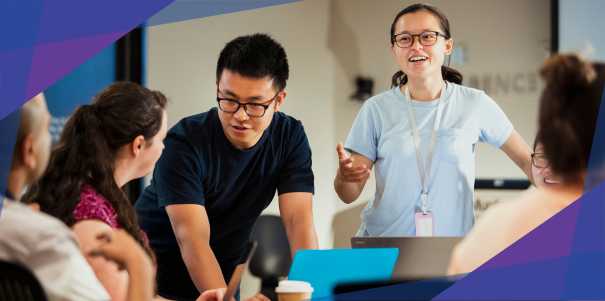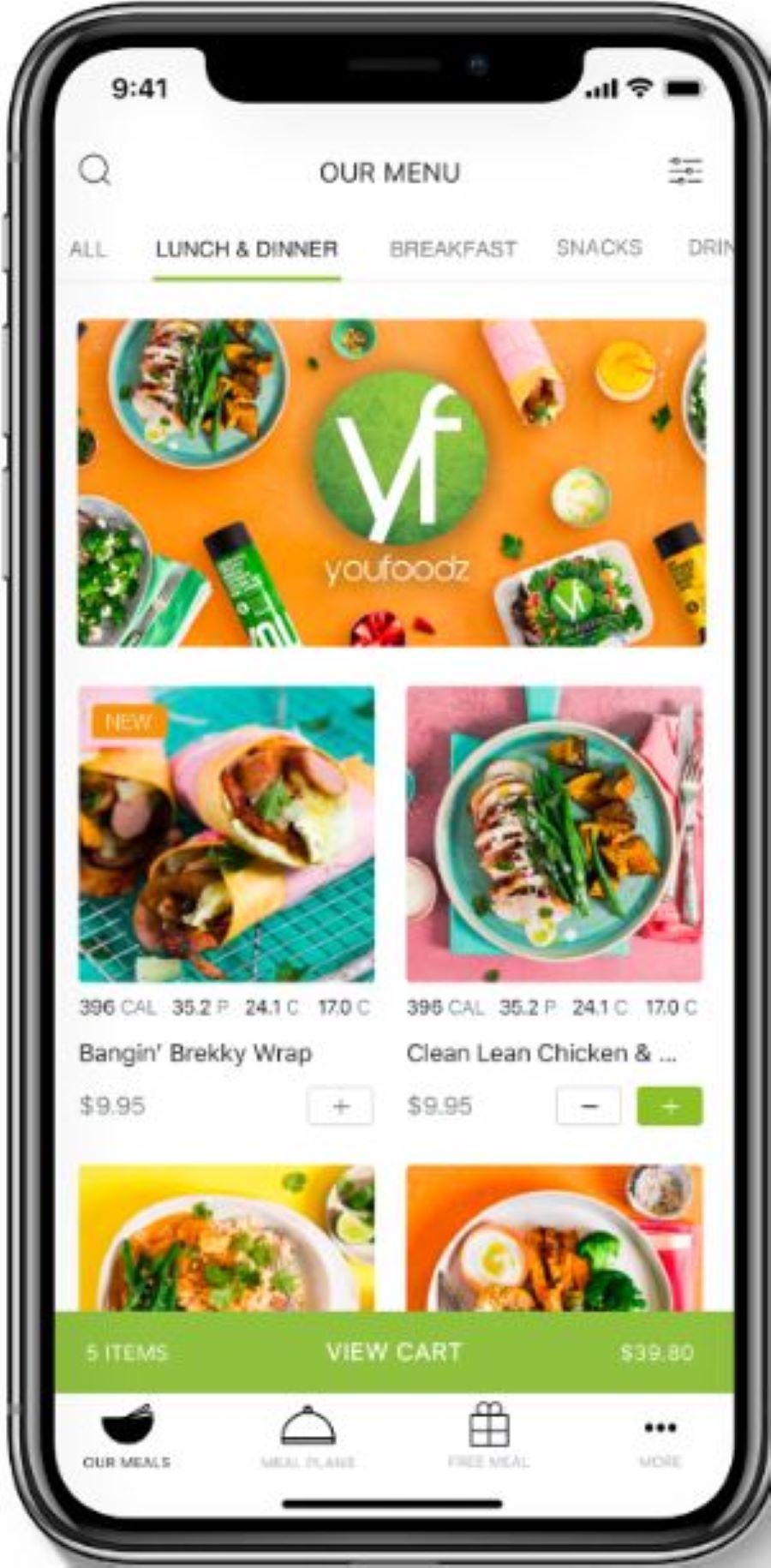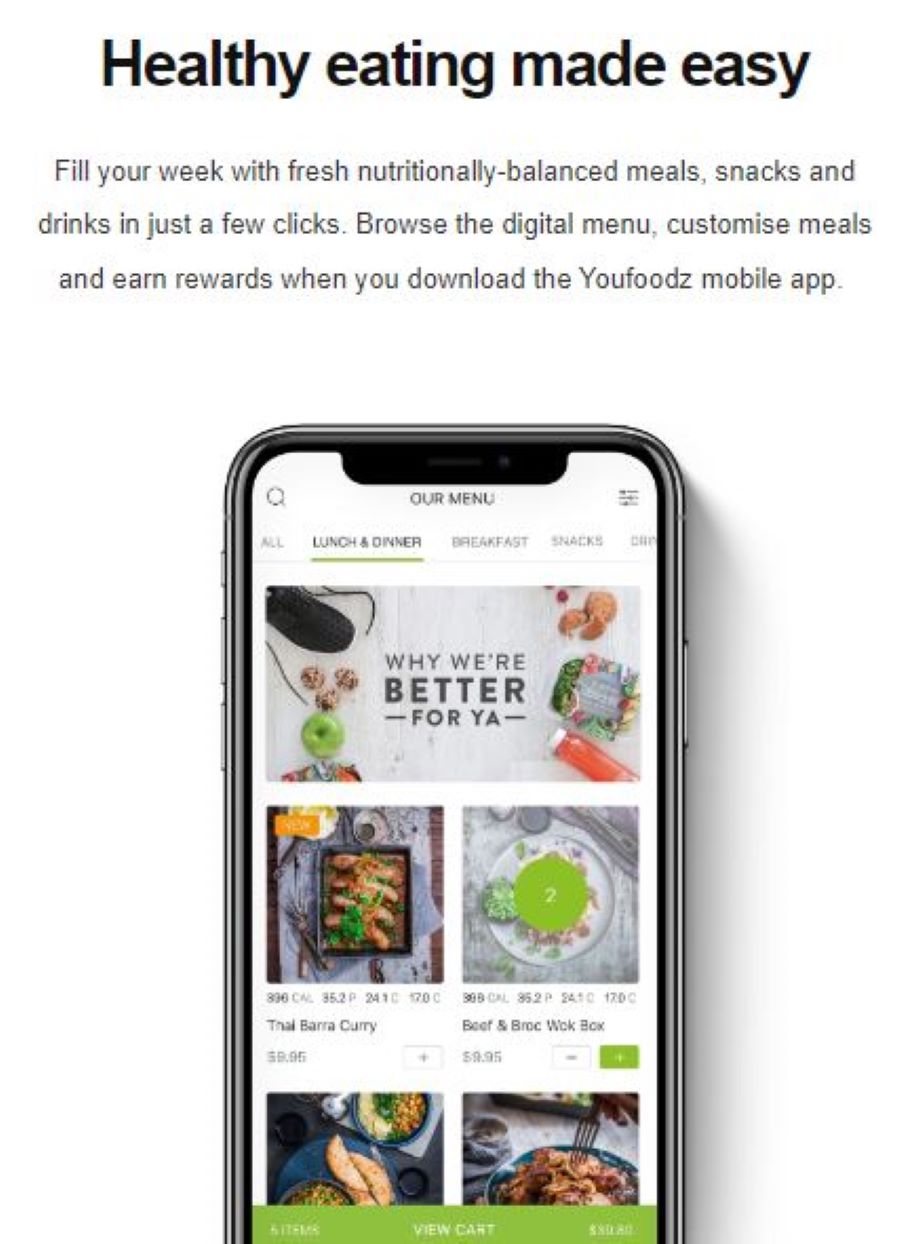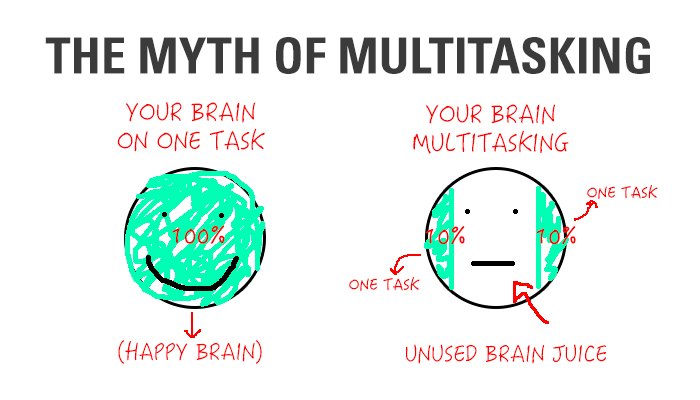Conducting a Meeting Efficiently: 10 Practical Tips From Australia’s Top App Development Agency

Meetings are imperative to the success of any project.
It keeps team members aligned and on track with the project’s progress. Meetings are also a great way to generate new ideas and build camaraderie in an organization.
Ironically, meetings can also be among the greatest productivity killers.
According to Rick Gilbert, founder of PowerSpeaking, executives consider more than 67% of meetings unsuccessful — costing businesses a staggering $37 billion a year.
Are you among those who find little success in your meetings?
Don’t fret. With proper planning, you can conduct a meeting efficiently.
In this article, I’ve rounded up some best practices that have helped Appetiser become what we are today — an award-winning app development agency empowering clients to make local and global impacts.
Read on to gain insights into how you can keep your next meeting as smooth and successful as it should be.
How to Conduct a Meeting in an Efficient Manner
1. Write clear meeting objectives
Having a clear agenda is the most important factor in conducting effective meetings. How can you accomplish something if you’re unsure of what you’re trying to achieve in the first place?
If you want to make your meetings even more effective, it can be helpful to identify the specific types of meetings you’re hosting—such as brainstorming, project kickoffs, or retrospectives. Understanding the most common types of meetings and how to optimize each can further improve team alignment and productivity.
As such, your first step should be to know why a meeting is needed. Write everything you want to accomplish for conducting a meeting.
Do you need to generate new ideas to grow your business, gather more information, or create a solid app marketing strategy?
Your list will come in handy during the actual session. It can help you stay focused if the discussion goes off track.
For example, suppose you are meeting with your manager to review several proposals for a certain initiative. In that case, your aim may be to leave the meeting with at least one approved proposal/option to move forward with.
A meeting objective for this situation could be:
The objective of this meeting is to get the approval of our manager for at least one of our retargeting campaign proposals and start to unpack/kick-off by August 1, 2023.
But first, is the meeting needed in the first place?
With the advent of communication and project management platforms, collaborating outside the conference room — virtual or otherwise — has never been easier. Before sending out a meeting invite, take some time to assess if the objectives you’ve listed merit a formal meeting.
How do you know if a meeting is necessary? The rule of thumb is that if an agenda item requires thorough discussion, you should conduct a meeting. Otherwise, consider using email, Slack, and other channels.
2. Invite relevant participants
Effective meetings include the right attendees. Nothing wastes employees’ time more than sitting in a meeting they have no reason to be in.
Likewise, failing to invite people who should be at the meeting is unproductive.
It may also ruffle some feathers. Imagine forgetting to invite your company’s chief executive to a crucial board meeting that aims to secure a majority vote, and you’ll get the picture.
To ensure you have the right meeting attendees, go back to your objectives. Then, list every person or team crucial to accomplishing each agenda item.
In most team projects, meeting participants often include:
- Key decision-makers
- Subject matter experts
- All or core members of the project team
- Admin to take the minutes of the meeting
3. Share the meeting agenda with the attendees beforehand
An hour filled with mostly dead air often doesn’t accomplish much. To avoid this scenario, include the meeting agenda on the invite.
This allows the participants to come in prepared, saving everyone time. It also helps invitees gauge if their participation in the meeting is necessary.
Often, the agenda should include the following:
- An outline of the topics to be discussed arranged in a logical order
- Brief description of the meeting objectives
- List of meeting attendees
- Time and medium of the meeting
- Link to the meeting (if you’re conducting a meeting online)
- Any information relevant to the topics to be discussed
There are no hard-and-fast rules for what to include in the agenda. You can customize it according to what works best for your team.
Our meeting agenda at Appetiser follows a template that attendees fill out beforehand. It includes our weekly learnings, wins and losses, focus areas, and action plans.
This allows us to ensure optimal use of our time and resources and invest more of them in our app design and development projects. In turn, this enables our clients to increase their speed to market, enhance growth, and achieve other goals.
Take Youfoodz, for example.


Along with other clients such as MyDeal, Youfoodz turned to us because our developers are the only ones who could help them hit their timelines.
The food delivery service company partnered with Appetiser to help retain customers and stand out in a highly competitive industry — a decision that yielded returns multiple folds.
In six short months, we built a top-rated e-commerce app named Australia’s Best Food Delivery Service for three straight years!
Check out the Youfoodz case study to find out how we did it.
4. Identify the ideal meeting date, place, and time
You need as many relevant participants as possible to conduct a meeting successfully. But nowadays, many organizations and teams work remotely and asynchronously.
Appetiser is among the organizations that thrive in this setup. Our elite roster of talents includes the top 1% of global professionals across Australia and four other continents .
As such, we ensure a common time for everyone when we conduct meetings. This practice has enabled us to stay aligned and build successful apps for numerous mobile and web clients.
But even if your team works synchronously, we highly recommend finding the most convenient time for everyone.
Considering everyone’s availability when setting a meeting, even for a remote one, shows respect for people’s time. It also increases the chance of having more participants attending the meeting.
If you are conducting a meeting in person, you also have to consider the most convenient and secure location for everyone. Remember, effective meetings are held in a comfortable environment.
5. Keep the meeting short
As early as the planning process, you should gauge the length of the meeting based on the agenda. If the meeting could take two hours of your team’s time, consider scheduling more than one session.
Longer meetings don’t necessarily lead to better productivity. In fact, it often does the opposite.
So, when your session is eating up more time than allotted, don’t hesitate to call a hard stop on the discussion respectfully. If an extension is necessary, ask for everyone’s consent before proceeding, and try to keep it within 15 minutes.
People lose focus during long meetings because of the amount of information they have to process. According to one study, employees can only stay focused for 52 minutes. Beyond that, their attention may drift elsewhere.
To help manage this, some teams use time-tracking software to monitor meeting durations and ensure they stay within the planned timeframe.
Remote meeting participants, in particular, tend to do other tasks while in a meeting. In fact, 92% of employees admitted to multitasking during meetings.

Image Source: enmast.com
So, how do you prevent meeting attendees from multitasking?
To avoid multitasking during meetings, we suggest the following:
- Assign roles for the meeting. Who will facilitate? Who will take minutes? Who will discuss the project’s status? Meetings are more focused and productive when each person is assigned a job.
- Time each agenda. Setting a specific time for each agenda can help keep conversations focused on the topics that matter most. If one person brings up something unrelated, sway the conversation back to the agenda swiftly.
- Remind everyone to close other tabs before the meeting starts. Most communication platforms have a feature that allows one to set an “in a meeting” or another similar status. Encourage participants to use the feature during meetings to avoid unnecessary distractions.
6. Come in prepared for the meeting
The key to a successful meeting is preparation, especially if you’re spearheading the flow of the discussion. Don’t underestimate the attendees’ ability to notice if you come in unprepared.
Before the meeting, make sure to run through the objectives and agenda. Check, too, if you have complete visuals, such as slides and other materials. It may help to have a checklist of everything you need for a smooth process.
If you are a participant, ensure you arrive ready for the meeting. Read the agenda beforehand and research the topics for discussion. This does not only speak of competence but also shows that you value other people’s time.
7. Give all members equal opportunity to participate in the discussion
It is common to see a few people talking more often than others in meetings. To allow everyone to share ideas and insights, design the meeting intentionally so that every member will have a chance to speak.
For example, if you’re brainstorming ways to market your app or crafting an action plan to generate demand, ask each member to give at least one suggestion.
Another option is to pre-assign each member with a topic to discuss. During the meeting, feel free to jump in if one struggles to get their message across or respectfully cut someone when they’re talking longer than necessary.
This is something that we uphold at Appetiser, whether we are conducting a meeting with our team or potential clients. We understand that communication is an important force for growth and improvement. Being direct, respectful, and fair strengthens us with a culture of openness.
Here’s how we ensure equal participation from crucial parties when we meet with our clients during design kickoff:
- First, our business strategist introduces all parties and explains the schedule and agenda of the workshop.
- Then, we ask our clients to explain their project briefly: the kind of app they’re building, their target audience, and a bit of branding.
- If time permits, we may touch base on the market feasibility, which includes marketing and monetization plans.
- Once we have a clear picture of your app idea, we set our client’s expectations and inform them of the next step — the design stage.
Whether you’re an entrepreneur with an iOS or Android app idea or an enterprise business, we always start with a design and prototype stage.
In the design stage, you’ll get the polished look and feel of your app without the programming. Think of it as a house. You have your plans and designs all complete, so you can virtually walk through the house before it’s built.
Afterward, we’ll challenge you to bring your app idea to the market as lean — and, therefore, as fast — as possible. One of the best ways to do this is through a minimum viable product (MVP).
An MVP is the earliest version of your web or mobile app with the leanest features to be usable. It allows you to test your vision and concept and even gain investor funding to cover the cost of full app development.
You can learn more about MVP by checking out this insightful article from one of our members.
8. Encourage freewheeling
Conducting a meeting is an excellent way to solve a problem or discover a breakthrough idea. As the saying goes, two (or more) heads are better than one.
To allow creative ideas to flow, encourage freewheeling during a meeting. Be open to as many ideas and opinions as possible. No matter how crazy the suggestion may sound, hold back on the criticism, as that may cause attendees to participate less.
Instead, encourage everyone to think outside the box and engage in a healthy debate. If a heated argument sparks, step in and cool down both parties.
This is how we empower our team to make the biggest impact.
At Appetiser, we push our members to Think Big and Become the Best. Every single initiative, experiment, or directional change is for one reason: to become better in our field until we’re the best.
One proof of this is BarbCare, a healthcare app designed to improve communication between aged care residents, their families, and their carers.
BarbCare is a pioneer in its field and a first-of-a-kind app in Australia and globally.

Discover how our culture of thinking big is reflected in BarbCare’s inspiring app development journey.
9. Have a conclusion at the end of each agenda
Before moving to a new agenda item, ensure the preceding ones have been addressed with a conclusion or a solution. Conducting a meeting this way ensures that every objective or problem has been tackled.
If different ideas keep you from moving forward, ask each participant to vote and make one final decision. But if you still need to decide on the ideal direction after discussing all possible options, note the issue as something for discussion at your next meeting.
It’s better to leave an agenda item open to progress than waste time on something that may merit another round of discussion.
10. Do a quick rundown of every action plan before closing the meeting
Before the meeting ends, clearly state the action items, the person or group in charge of the tasks, and the target dates of completion. This helps keep members on the same page and aware of the next steps.
Afterward, ask the group if everything has been covered. Set the next meeting date if there’s a need for a follow-up meeting.
To lighten the mood and help members disengage, always end meetings on a positive note.
For example, you may tell a joke or share an inspiring anecdote. Better yet, remind everyone of the positive contributions they make to the organization. Doing so will help boost their morale.
Lastly, don’t forget to thank everyone for their time.
And, oh, a bonus piece of advice…
Bonus Tip: Consider holding a Q&A session
Many facilitators leave the question-and-answer session toward the end of a meeting. Some even conduct it only when they have spare minutes or skip it altogether.
While pushing the Q&A to the latter part of the meeting can prevent it from going off-track, it can result in a rushed, half-baked discussion.
A Q&A session is an important aspect of a meeting and shouldn’t be neglected.
It is a great way to ensure that all questions are covered. It is also an excellent opportunity to engage the meeting participants while honing your facilitation skills.
To ensure a more productive Q&A, allocate time for the activity from the get-go. You may also consider holding it at the earlier part of the meeting or spreading it throughout, ideally before jumping to a new agenda item.
You may also collate questions ahead to encourage participants to research before the meeting. This will also allow you to prepare for answers beforehand, saving everyone precious minutes during the meeting.
In a nutshell, here’s what an effective meeting should look like
Whether in-person or virtual, an effective meeting must drive connection, communication, and collaboration within an organization. When these three elements are met, achieving any goal is possible.
Best of luck!
And if you need a partner to build an app that can help drive efficiency and productivity within your organization, contact Appetiser. Together, let’s work toward making technology empower your success.


